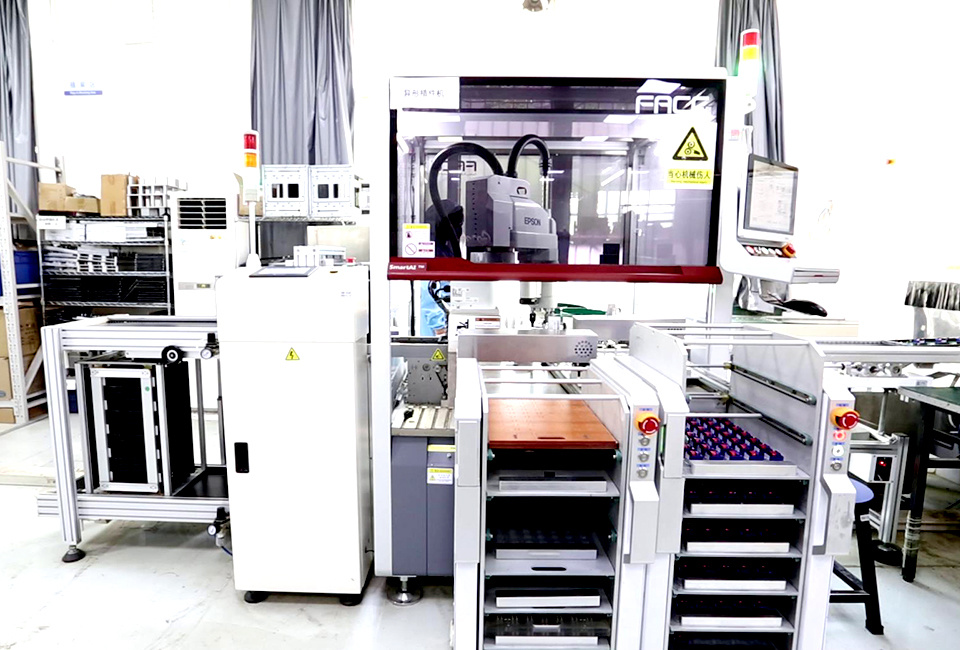Enhancing Water Quality with Reverse Osmosis Control Integrated Systems
2025-05-15
Reverse Osmosis Control Integrated Systems (ROCIS) are becoming increasingly vital in various sectors, particularly in the pharmaceutical and healthcare industries where high purity water is essential. These systems utilize the principle of reverse osmosis to remove impurities from water, providing a reliable solution for water quality management.
At its core, reverse osmosis is a water purificati
Reverse Osmosis Control Integrated Systems (ROCIS) are becoming increasingly vital in various sectors, particularly in the pharmaceutical and healthcare industries where high purity water is essential. These systems utilize the principle of reverse osmosis to remove impurities from water, providing a reliable solution for water quality management.
At its core, reverse osmosis is a water purification technology that forces water through a semipermeable membrane. This process effectively removes a wide range of contaminants, including salts, bacteria, and organic compounds, ensuring that the resulting water meets stringent quality standards required in medical and analytical applications. The integration of control systems into these setups enhances their functionality, allowing for real-time monitoring and control of water quality parameters.
One significant advantage of a Reverse Osmosis Control Integrated System is its capacity for automation. By employing advanced sensors and monitoring tools, these systems can continuously assess water quality metrics such as total dissolved solids (TDS), pH, and microbial contamination. This level of oversight not only aids in maintaining compliance with industry regulations but also helps in identifying potential issues before they escalate into major problems.
For professionals in the pharmaceutical sector, ensuring consistent water quality is critical. ROCIS can be tailored to meet specific regulatory requirements, thereby supporting compliance with Good Manufacturing Practices (GMP) and other industry standards. Their ability to deliver high-quality water on demand can enhance the efficiency of various processes, from laboratory analysis to drug formulation.
Moreover, integrating these systems with existing laboratory frameworks can streamline operations. By connecting ROCIS to data management systems, professionals can access water quality data in real-time, facilitating timely decision-making. This integration also allows for the automation of maintenance protocols, ensuring that the system operates at peak efficiency without requiring constant supervision.
In conclusion, Reverse Osmosis Control Integrated Systems represent a significant advancement in water quality management for the pharmaceutical and healthcare industries. By ensuring the delivery of high-purity water, these systems not only enhance product quality but also promote operational efficiency. As the demand for stringent water quality standards continues to grow, investing in ROCIS can provide a competitive edge, ensuring that professionals remain at the forefront of innovation in water quality analysis.
At its core, reverse osmosis is a water purification technology that forces water through a semipermeable membrane. This process effectively removes a wide range of contaminants, including salts, bacteria, and organic compounds, ensuring that the resulting water meets stringent quality standards required in medical and analytical applications. The integration of control systems into these setups enhances their functionality, allowing for real-time monitoring and control of water quality parameters.
One significant advantage of a Reverse Osmosis Control Integrated System is its capacity for automation. By employing advanced sensors and monitoring tools, these systems can continuously assess water quality metrics such as total dissolved solids (TDS), pH, and microbial contamination. This level of oversight not only aids in maintaining compliance with industry regulations but also helps in identifying potential issues before they escalate into major problems.
For professionals in the pharmaceutical sector, ensuring consistent water quality is critical. ROCIS can be tailored to meet specific regulatory requirements, thereby supporting compliance with Good Manufacturing Practices (GMP) and other industry standards. Their ability to deliver high-quality water on demand can enhance the efficiency of various processes, from laboratory analysis to drug formulation.
Moreover, integrating these systems with existing laboratory frameworks can streamline operations. By connecting ROCIS to data management systems, professionals can access water quality data in real-time, facilitating timely decision-making. This integration also allows for the automation of maintenance protocols, ensuring that the system operates at peak efficiency without requiring constant supervision.
In conclusion, Reverse Osmosis Control Integrated Systems represent a significant advancement in water quality management for the pharmaceutical and healthcare industries. By ensuring the delivery of high-purity water, these systems not only enhance product quality but also promote operational efficiency. As the demand for stringent water quality standards continues to grow, investing in ROCIS can provide a competitive edge, ensuring that professionals remain at the forefront of innovation in water quality analysis.
Reverse Osmosis Control Integrated System
RELATED NEWS
2025-06-12
In the pharmaceutical and healthcare sectors, water quality is of paramount importance. One of the critical components in maintaining high water quality is the Single Stage RO Controller. This device plays a vital role in ensuring that the reverse osmosis (RO) systems operate efficiently and effectively, thereby delivering purified water that meets stringent industry standards.
A Single Stage RO C
The Impact of Online Turbidity Analysis on Water Safety Measures
2025-06-05
The Impact of Online Turbidity Analysis on Water Safety Measures
Introduction: Understanding the Importance of Water Safety
Water is a fundamental resource for sustaining life, yet ensuring its safety is a significant challenge faced by communities worldwide. Contaminated water can lead to serious health problems, making effective monitoring and analysis crucial. One of the critical parameters
Maximizing Water Quality Analysis with High Turbidity Data Acquisition Terminals
2025-05-29
High turbidity data acquisition terminals are specialized devices designed to measure the turbidity levels in various water sources. Turbidity is a key parameter indicating the cloudiness or haziness of water caused by suspended particles. In the medical and pharmaceutical sectors, maintaining water quality is vital for both research and operational purposes. High turbidity levels can indicate con




